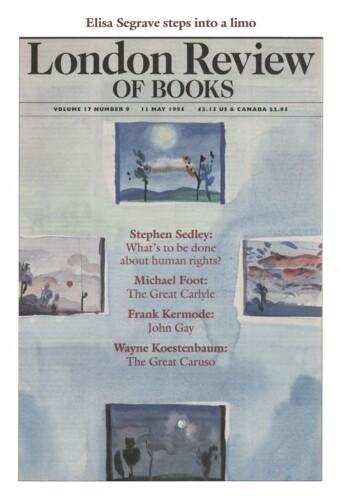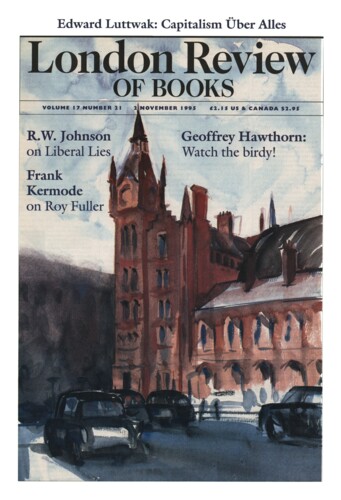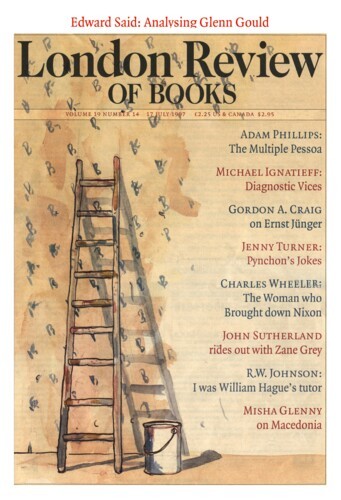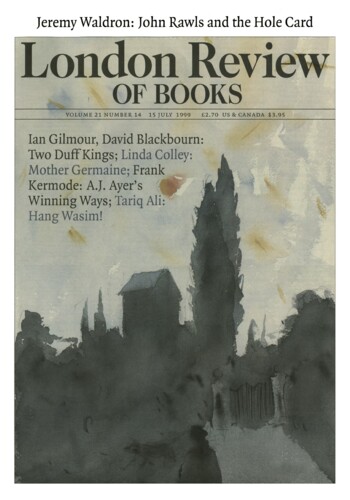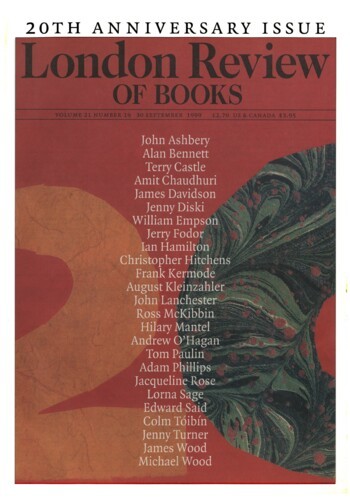I’ve Got Your Number (Written on the Back of my Hand): ‘High Fidelity’
Jenny Turner, 11 May 1995
Rob Fleming is 35 years old, nearly 36. He lives in North London, in a one-bedroom conversion flat in Crouch End. His girlfriend, Laura, is a lefty lawyer who would like to be working for a legal aid firm but finds herself, to her dismay, with a flash job in the City instead. Laura has this very morning walked out on Rob, with a carrier bag in one hand and a hold-all in the other. ‘I don’t really know what I’m doing,’ she says, crying as she goes. So this is what Rob does:
